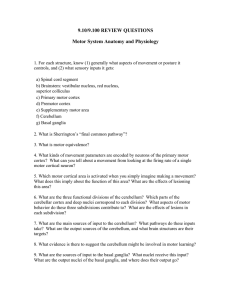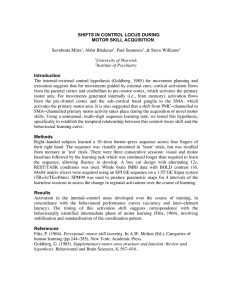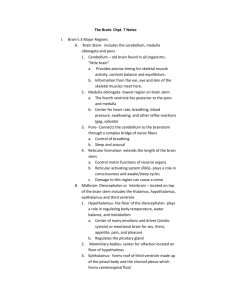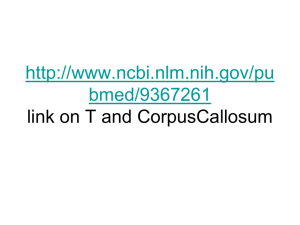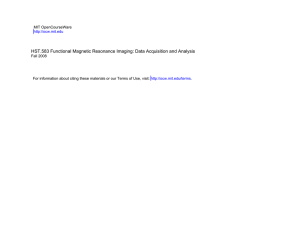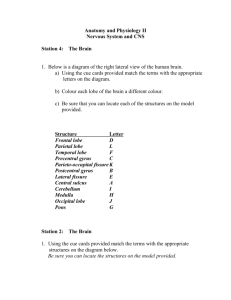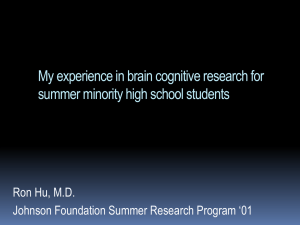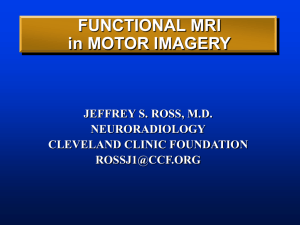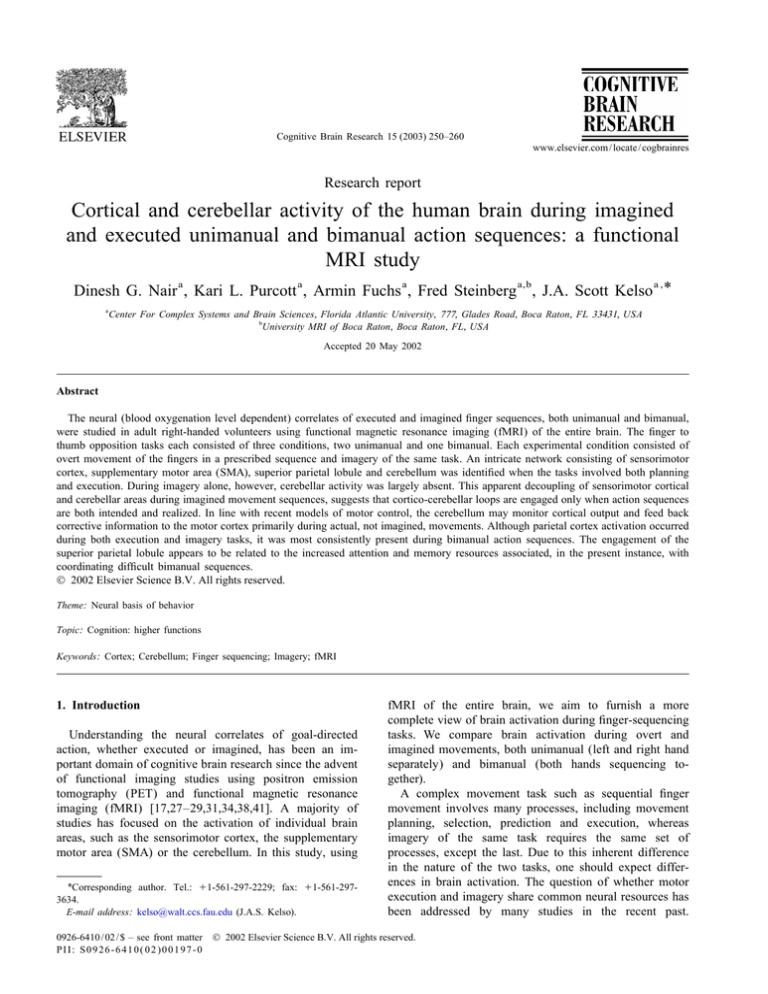
Cognitive Brain Research 15 (2003) 250–260
www.elsevier.com / locate / cogbrainres
Research report
Cortical and cerebellar activity of the human brain during imagined
and executed unimanual and bimanual action sequences: a functional
MRI study
Dinesh G. Nair a , Kari L. Purcott a , Armin Fuchs a , Fred Steinberg a,b , J.A. Scott Kelso a , *
a
Center For Complex Systems and Brain Sciences, Florida Atlantic University, 777, Glades Road, Boca Raton, FL 33431, USA
b
University MRI of Boca Raton, Boca Raton, FL, USA
Accepted 20 May 2002
Abstract
The neural (blood oxygenation level dependent) correlates of executed and imagined finger sequences, both unimanual and bimanual,
were studied in adult right-handed volunteers using functional magnetic resonance imaging (fMRI) of the entire brain. The finger to
thumb opposition tasks each consisted of three conditions, two unimanual and one bimanual. Each experimental condition consisted of
overt movement of the fingers in a prescribed sequence and imagery of the same task. An intricate network consisting of sensorimotor
cortex, supplementary motor area (SMA), superior parietal lobule and cerebellum was identified when the tasks involved both planning
and execution. During imagery alone, however, cerebellar activity was largely absent. This apparent decoupling of sensorimotor cortical
and cerebellar areas during imagined movement sequences, suggests that cortico-cerebellar loops are engaged only when action sequences
are both intended and realized. In line with recent models of motor control, the cerebellum may monitor cortical output and feed back
corrective information to the motor cortex primarily during actual, not imagined, movements. Although parietal cortex activation occurred
during both execution and imagery tasks, it was most consistently present during bimanual action sequences. The engagement of the
superior parietal lobule appears to be related to the increased attention and memory resources associated, in the present instance, with
coordinating difficult bimanual sequences.
2002 Elsevier Science B.V. All rights reserved.
Theme: Neural basis of behavior
Topic: Cognition: higher functions
Keywords: Cortex; Cerebellum; Finger sequencing; Imagery; fMRI
1. Introduction
Understanding the neural correlates of goal-directed
action, whether executed or imagined, has been an important domain of cognitive brain research since the advent
of functional imaging studies using positron emission
tomography (PET) and functional magnetic resonance
imaging (fMRI) [17,27–29,31,34,38,41]. A majority of
studies has focused on the activation of individual brain
areas, such as the sensorimotor cortex, the supplementary
motor area (SMA) or the cerebellum. In this study, using
*Corresponding author. Tel.: 11-561-297-2229; fax: 11-561-2973634.
E-mail address: kelso@walt.ccs.fau.edu (J.A.S. Kelso).
fMRI of the entire brain, we aim to furnish a more
complete view of brain activation during finger-sequencing
tasks. We compare brain activation during overt and
imagined movements, both unimanual (left and right hand
separately) and bimanual (both hands sequencing together).
A complex movement task such as sequential finger
movement involves many processes, including movement
planning, selection, prediction and execution, whereas
imagery of the same task requires the same set of
processes, except the last. Due to this inherent difference
in the nature of the two tasks, one should expect differences in brain activation. The question of whether motor
execution and imagery share common neural resources has
been addressed by many studies in the recent past.
0926-6410 / 02 / $ – see front matter 2002 Elsevier Science B.V. All rights reserved.
PII: S0926-6410( 02 )00197-0
D.G. Nair et al. / Cognitive Brain Research 15 (2003) 250–260
Significant increases in fMRI signal intensity were observed in the pre-central (primary motor cortex, M1) and
the post-central gyri (primary somatosensory cortex, S1),
during both motor performance and imagery of a finger-tothumb opposition task [31]. The same task induced activation in contralateral M1, S1 and pre-motor cortices during
actual execution but only in M1 and premotor cortex
during mental simulation in another study [34]. When
subjects were asked to make fists and then imagine doing
the same, increased fMRI signal intensity was observed in
M1, premotor cortex and the SMA during both execution
and imagery tasks, with S1 showing significantly less
activation during imagery [27]. Cerebral blood flow measured using PET was observed to increase in medial and
lateral premotor areas as well as cingulate motor area
(CMA) during both execution and imagery of joystick
movements [38]. The latter study also reported additional
activation in primary sensorimotor cortex and rostral
superior parietal lobe during task execution [38]. Compared to actual motor performance, imagery appears to
produce significantly lower fMRI signal changes in the
cerebellum [27,28]. Although these studies used different
tasks (making fists [27] and finger to thumb opposition
[28]), both reported differential activation of the cerebellum during execution and imagery: strong activation of
the anterior cerebellum was observed during execution
while imagery resulted in posterior lobe activation. Movement execution thus seems to engage a large network of
brain areas including the M1, S1, premotor areas (SMA,
CMA), superior parietal lobule and the cerebellum. Imagery of the same movements seems to engage almost all
these areas, although the intensity of activation appears to
drop off in S1 and cerebellum.
Unimanual and bimanual tasks employ overlapping as
well as different neural resources [13]. In right-handed
individuals, the right sensorimotor cortex was found to be
more active than the left in unimanual finger sequencing
tasks, whereas the left showed more activation than the
right sensorimotor cortex during bimanual tasks [13]. For
both unimanual and bimanual tasks, the area and intensity
of brain activation appear to increase with task complexity,
force and rate of movement [13,14,32,33,35,36,40,42].
SMA, pre-SMA and CMA have been implicated in the
control of complex finger movements [5,6,15,25,36]. Comparing repetitive tapping of the index finger with sequential
movement of fingers, Wexler et al. [42], found that the
parietal lobe, especially the superior parietal area, was
selectively activated in the more complex finger-sequencing task. In self-paced finger movements, however, cortical
structures around the intra-parietal sulcus were activated
[35]. The intra-parietal sulcus is also active when finger
movements are coordinated with reference to a specific
spatial reference [1,16]. It appears that the parietal cortex
is involved in a wide variety of tasks, especially those in
which subjects need to access spatial information and
spatial memory. Since unimanual and bimanual tasks
251
basically differ in the involvement of one versus two
hemispheres, studies have focused on the laterality of brain
activation during such tasks. In right-handed individuals,
significant ipsilateral (left) motor cortex (M1) activation is
observed during movement with the non-preferred (left)
hand [25,37]. Such ipsilateral activation for movement of
the non-dominant hand has been attributed to task complexity [33]. Similarly, some studies have reported bilateral
cerebellar activation when right-handed subjects moved
using their non-dominant left hand [8,14]. These findings
suggest that when subjects perform tasks with their nondominant hand, an additional neural loop consisting of
motor areas of both the hemispheres is involved, that
facilitates coordination of motor behavior.
In the present study, we aim to identify the brain areas
involved in both overt finger sequencing and imagery
¨
alone conditions. Following Jancke
et al. [13] we studied
differences in brain activation between unimanual and
bimanual finger movements. Here, however, instead of
using a simple finger-sequencing (2345) task, a different
movement sequence was prescribed for each task (left,
right and bimanual conditions) in order to minimize or at
least balance effects due to learning, and to control for task
difficulty across exemplars of the task. By imaging the
entire brain during these tasks, our main goals were 2-fold:
first, to understand how cortical and cerebellar areas are
differentially engaged during the course of motor performance and imagery. In particular, we expected on the
basis of older [22] and more recent models of motor
control [43] which posit extensive internal feedback and
feedforward cerebro-cerebellar loops, that cerebellar involvement will be greater during active, planned than
imagined movement sequences. This is because of the
putative role of the cerebellum in correcting errors in
motor commands prior to their effects at the periphery. Our
second goal was to clarify the role of parietal and other
cortical areas in movements such as complex bimanual
action sequences, which incorporate spatial information
and spatial memory. In particular, evidence from patients
with parietal lesions suggests frank motor imagery deficits
[4,18]. On this basis, we might expect greater parietal
involvement as the task becomes more difficult to imagine,
such as when the non-preferred hand is used or when both
hands are sequencing together.
2. Materials and methods
2.1. Subjects
In this study eight healthy right-handed volunteers
participated, three males and five females, aged 25–40
years. Informed consent was obtained from all subjects.
Handedness was determined by simple inquiry, consisting
of a few questions from the Edinburgh Handedness
Inventory. All subjects were neurologically intact. No one
252
D.G. Nair et al. / Cognitive Brain Research 15 (2003) 250–260
reported any psychiatric or cardiovascular illness and none
were on medication.
2.2. Task
The experiment consisted of three conditions, two
unimanual and one bimanual. During the unimanual condition, subjects performed movements with the right or left
hand alone, whereas the bimanual task was carried out
using both hands simultaneously. During the experiment,
the hands were kept in a semi-prone position, by the
subject’s side, so that the experimenters were able to see
the subject’s finger movements at all times (and lack of
such during imagery conditions). The fingers were labeled
1–5 from the thumb to the little finger (anatomical
convention) and the sequences were 5342, 2435 and 4253
for left, right and bimanual conditions, respectively. Task
instructions were given to subjects just before the beginning of each experimental condition. Subjects were asked
to keep their eyes closed during the entire experiment and
to concentrate on the task, opposing thumb to fingers as
fast, firmly and accurately as possible. Subjects were
monitored throughout the experiment for movement speed
and precision. Each experimental condition consisted of
overt movement of the fingers in a prescribed sequence
and imagery of the same task. For the latter, subjects were
instructed to imagine making the requested finger sequences as quickly and as accurately as possible, and to
remain relaxed without moving their fingers. The order of
conditions was randomized across subjects.
2.3. Image acquisition protocol
Whole brain fMRI data acquisition was carried out using
a 1.5-Tesla Signa scanner (General Electric Medical
Systems, Milwaukee, WI), equipped with echo planar
imaging (EPI) capabilities. Images were acquired with the
participants lying supine inside the scanner. Before entering the scanner, subjects were briefed about the tasks to be
performed. The sequence of finger movements was explained to them when they were inside the scanner. Each
condition (unimanual and bimanual) lasted for 4 min, and
was comprised of four periods of activation (ON, task)
during which subjects performed the task and four baseline
(OFF, rest) periods in which subjects heard only the
ambient machine noise. Alternating periods of task and
rest were cued to the subject through instructions to
‘move’ and ‘rest’, respectively, delivered through a microphone. The two phases of each condition: overt movement
(right, left and bimanual) and imagery (right, left and
bimanual) lasted 12 min each. Throughout the experiment,
the subject’s head was supported by a comfortable foam
mold. Head movement was further minimized using foam
padding and forehead restraining straps.
Scanning started with the acquisition of full head, 3D
SPGR (spoiled gradient) anatomical images, with the
following imaging parameters: field of view (FOV)526
cm, frequency–phase matrix52563256, repetition time
(T R )534 ms, echo time (T E )55 ms, flip angle (FA)545 o ,
slice thickness 2 mm, and one excitation per phase
encoding step. For each subject, T2*-weighted gradient
echo, echo planar multi-slice datasets were acquired during
performance of the finger sequencing tasks (T R 53000 ms;
T E 560 ms; FA5908; 20 axial slices, frequency–phase
matrix564364; FOV524 cm; slice thickness55 mm and
inter-slice gap52.5 mm). Thus the voxel size was 3.753
3.7537.5 mm. High-resolution background images (same
20 slices, frequency–phase matrix size55123512) were
also acquired for overlaying the functional data.
2.4. Data analysis
The software packages used for data analysis were
AFNI (Analysis of Functional NeuroImages, Medical
College of Wisconsin [2]) for display and analysis, and
SPM (Statistical Parametric Mapping, Wellcome Department of Cognitive Neurology, London) for coregistration.
For each subject the following steps of analysis were
performed:
(1) Movement correction of the functional datasets using
the Fourier method in AFNI [3].
(2) Cross-correlation with a boxcar reference function (30 s
on, 30 s off) which was shifted by 6 s to account for
the delay of the hemodynamic response. This shift
was determined by examining the raw time series
data. AFNI creates a dataset, which contains two
numbers per voxel representing the cross-correlation
value (a number between 21 and 1) and the intensity.
(3) Masking out all voxels with a cross-correlation (with
zero-time lag) of smaller than 0.5 leads to datasets of
intensities for active voxels only.
(4) Coregistration and reslicing of the high-resolution
background images and the intensity dataset with a
full-head T1-weighted scan with cubic voxels of 2
mm (done in SPM).
(5) Transformation into Talairach stereotaxic space [39].
(6) Identification of clusters of active voxels using cluster
size thresholding. The minimum volume for a cluster
was determined using the AlphaSim module in AFNI.
This procedure uses Monte Carlo simulations to create
random datasets in order to determine the probability
of finding activations due to chance. With the underlying assumption that such activity is more likely in
single voxels than clusters of voxels, probability
values are calculated for clusters with different volumes and active voxels within a certain distance [44].
In our case, these values turned out to be 4 mm for the
distance between active voxels and a volume of 40 ml
in order to achieve an overall significance of P,0.01.
D.G. Nair et al. / Cognitive Brain Research 15 (2003) 250–260
In individual subjects, brain areas with active clusters
were identified by their coordinates in Talairach stereotaxic
space using the ‘Talairach daemon’, a web-based interactive program that reads out the brain area when the
coordinates of a voxel are given [26]. Once clusters were
identified in the individual data (for every condition and
every subject) these data were subjected to a two-way
analysis of variance (ANOVA) using ‘hand’ (three levels:
left, right, bimanual) and ‘state’ (two levels: movement
and imagery) as the two crossed factors. Significant voxels
were overlaid in color over the anatomy with positive
activations, i.e., higher MR signal amplitude during task
compared to rest, ranging from red (minimum) to yellow
253
(maximum) and negative activations ranging from blue to
cyan.
3. Results
All subjects performed the task sequences correctly at
movement rates that were quite similar across subjects. No
overt movement was observed during the imagery tasks.
During post-experiment interviews in which subjects were
asked to evaluate their performance, some subjects reported that imagining bimanual sequences was the most
difficult task.
Fig. 1. Comparison of bimanual versus left-handed execution of finger sequences yielded significantly greater activity (P,0.01) in the right pre-central
gyrus (square, a), right precuneus (oval, a), left sensorimotor cortex (square, b), left precuneus (yellow oval, b), SMA (white oval, b), and bilateral
cerebellum (colored voxels, c,d). Activity is overlaid on a representative individual brain. The Z values show the slice position along the vertical axis in the
Talairach coordinate system. R and L indicate the right and the left side, respectively.
254
D.G. Nair et al. / Cognitive Brain Research 15 (2003) 250–260
Fig. 2. Comparison of bimanual versus right-handed execution of finger sequences yielded significant voxels (P,0.01) in the left precuneus (yellow
ellipse, a), right sensorimotor cortex (arrow, a), SMA (rectangle, a) and bilateral cerebellum (colored voxels, c,d). Greater activity (voxels in red) is
observed during bimanual than right-handed action sequences. The Z values show the slice position along the vertical axis in the Talairach coordinate
system. R and L denote the right and the left side, respectively.
3.1. Group analysis
ANOVA revealed a main ‘hand’ effect (F(2,42)55.14;
at P,0.01) in bilateral pre- and post-central gyri. Similarly, a main effect of ‘state’ (F(1,42)57.28; P,0.01) was
also found in bilateral pre- and post-central gyri, SMA,
Fig. 3. Comparison of left versus right-handed execution tasks. The right sensorimotor cortex (white arrow, a), SMA (yellow oval, a) and the left
cerebellum (white oval, b) have more activation during left-handed than right-handed execution and the left sensorimotor cortex (yellow arrow, a) and right
cerebellum (yellow oval, b) show more activity during right hand execution. The Z values show the slice position along the vertical axis in the Talairach
coordinate system. R and L denote the right and the left side, respectively.
D.G. Nair et al. / Cognitive Brain Research 15 (2003) 250–260
bilateral parietal lobe, bilateral precuneus and bilateral
cerebellum. The interaction (F(2,42)) between hand and
state was also significant (P,0.01). In the following, we
unpack this interaction using conservative (P,0.01) posthoc t-tests.
3.1.1. Execution
3.1.1.1. Bimanual versus unimanual. Post-hoc analysis
revealed greater activity for bimanual than left-handed
movements in the left sensorimotor cortex, bilateral superior parietal lobules, supplementary motor area (SMA)
and bilateral cerebellum. Fig. 1a shows enhanced activity
in the right precuneus and the right precentral gyrus, Fig.
1b shows increased activity in the left sensorimotor area,
SMA and the left precuneus, and Fig. 1c,d depicts greater
activity in bilateral cerebellum during bimanual action
sequences.
Significant differences (P,0.01) were also found between bimanual and right-handed finger movements in the
right sensorimotor cortex, SMA, left precuneus, and bilateral cerebellum. Fig. 2a shows enhanced activity in the
right sensorimotor cortex, SMA and left precuneus. Fig.
2b,c shows higher intensity activation in bilateral cerebellum during bimanual action sequences.
255
3.1.1.2. Unimanual differences: left versus right. A comparison of left and right-handed movement sequences
revealed significant (P,0.01) voxels in right sensorimotor
cortex, SMA and left cerebellum (and corresponding
negative differences in the left sensorimotor cortex and
right cerebellum). The red and yellow voxels in Fig. 3a
show enhanced activity in the right sensorimotor cortex
and SMA during left-handed action sequences, while the
blue voxels depict enhanced activity in the left sensorimotor cortex during right-handed action sequences.
Fig. 3b shows enhanced activity in the left, ipsilateral
cerebellum (red voxels) during the left-handed sequencing
task and also in the right cerebellum during the righthanded task (blue voxels).
3.1.2. Imagery versus execution
Comparison of left-handed execution and imagery tasks
revealed significantly active voxels (P,0.01) in the right
sensorimotor cortex, SMA, and the left cerebellum (Fig.
4). The colored voxels in Fig. 4 depict enhanced activity in
SMA, right sensorimotor cortex (Fig. 4a) and left cerebellum (Fig. 4b) during left-handed execution. A similar
comparison between executed and imagined right-handed
sequences revealed significantly active voxels in the left
sensorimotor cortex, left superior parietal lobule (Fig. 5a)
and the right cerebellum (Fig. 5b). Significant differences
Fig. 4. Comparison of left-handed execution versus left-handed imagined tasks. Significantly greater activation (P,0.01) was observed in the right
sensorimotor cortex (arrow, a), SMA (rectangle, a), and the left cerebellum (white oval, b) during execution. The Z values show the slice position along the
vertical axis in the Talairach coordinate system. R and L denote the right and the left side, respectively.
256
D.G. Nair et al. / Cognitive Brain Research 15 (2003) 250–260
Fig. 5. Comparison of right-handed execution versus right-handed imagery shows significant differences (P,0.01) in the left sensorimotor cortex (white
arrow, a), left superior parietal lobe (yellow arrow, a) and the right cerebellum (oval, b) indicating greater activation during execution. The Z values show
the slice position along the vertical axis in the Talairach coordinate system. R and L denote right and left, respectively.
between bimanual execution and bimanual imagination
tasks were observed in bilateral sensorimotor cortices,
bilateral precuneus, SMA, bilateral inferior parietal
lobules, and bilateral cerebellum (Fig. 6). Enhanced activity in bilateral sensorimotor cortices and SMA can be seen
in Fig. 6a,b, right precuneus in Fig. 6a, left precuneus
activity in Fig. 6b, bilateral inferior parietal lobules in Fig.
6c, and bilateral cerebellum in Fig. 6d.
3.2. Individual analysis
Variability in brain activation is to be expected among
subjects. Fig. 7 provides an ‘activation grid’ which depicts
brain activation (hatched regions) in our subjects during
the six tasks. The top row of the figure shows activity
during the three execution tasks (left, right and bimanual)
and the bottom, activation during imagery tasks. The
numbers on the Y-axis represent individual subjects 1–8;
RM and LM, right and left primary motor area; RS and
LS, right and left primary somatosensory area; SM,
supplementary motor area; RP and LP, right and left
superior parietal lobule; RC and LC, right and left cerebellum. It can be seen that cerebellar activity (last two
columns) in most of the subjects drops off during the
imagery tasks. Subjects show maximum activation during
the bimanual execution task (top right).
Clusters of brain areas active for all subjects during
execution and imagery conditions were tabulated to examine similarities in patterns of neural activation. Table 1
gives the number of subjects with activation in different
brain areas during all six tasks. The rows depict individual
brain areas and the six columns represent the six tasks.
Two asterisks indicate seven or more subjects, a single
asterisk indicates four to six subjects and a blank cell
indicates that only three or fewer subjects showed activation in that particular brain area. Maximum activation was
seen in all areas during the bimanual execution task (fifth
column). There is more ipsilateral activation in the sensorimotor cortex during the left (non-preferred hand)
movement task than the right-handed (preferred hand)
movement task (compare columns 1 and 3). A general
reduction in activity was observed during the imagery
tasks, especially in the somatosensory cortex and the
cerebellum (columns 2, 4 and 6). SMA was consistently
active during both movement and imagery tasks (row 3),
whereas activity in the cerebellum dropped off markedly
during the imagery tasks (compare data in columns 1 and
2, columns 3 and 4, columns 5 and 6).
4. Discussion
Given the complexity of voluntary movement, both in
terms of the selective engagement of neuroanatomical
D.G. Nair et al. / Cognitive Brain Research 15 (2003) 250–260
257
Fig. 6. Comparison of bimanually executed and imagined action sequences resulted in greater activation in right precuneus (yellow oval, a) bilateral
sensorimotor cortices (yellow arrows, b), SMA (white oval, b), left precuneus (yellow oval, b), bilateral parietal lobes (c), and bilateral cerebellum (d)
during the bimanual execution task. The Z values show the slice position along the vertical axis in the Talairach coordinate system. R and L denote the
right and the left side, respectively.
structures in time and the vast repertoire of behaviors
possible, it is reasonable to assume that an intricate
network of cortical and subcortical structures is involved,
especially in fine movements such as finger sequencing.
Definitive answers are clouded, however, by the wide
variety of tasks employed and because the same set of task
components is seldom studied in the same subjects. Two
important points may be gleaned from the diverse activations observed in different studies: (i) the brain activation
observed depends largely on the nature of the task; and (ii)
seemingly complex tasks require the recruitment of a
larger and more intricately connected network of brain
areas.
A key feature of the present experimental design was
that the same subjects were examined in a spatiotemporal
sequencing task that isolated the dimensions of handedness
(left and right), manual engagement (unimanual and
bimanual) and cognitive influences (imagined and executed) on action. Overall effects of these manipulations are
present in the brain, as well as interesting differences
among individuals in the way neural areas are engaged and
disengaged in sequential tasks.
As expected, activation in cortical and cerebellar regions
of the brain is associated with the planning and execution
of spatiotemporal actions. Pre- and post-central gyri, SMA,
parietal cortex and cerebellum are all recruited to differing
degrees in active, self-generated action sequences. These
regions are certainly necessary, if not sufficient, for this
258
D.G. Nair et al. / Cognitive Brain Research 15 (2003) 250–260
Fig. 7. shows an ‘activation grid’ which depicts brain activation (hatched regions) of all subjects during the six tasks. The top row shows activity during
the three execution tasks, left, right and bimanual (indicated by left-move, right-move and bim-move, respectively). The bottom row shows activity during
imagery tasks (indicated by left-image, right-image and bim-image). The numbers on the Y-axis represent individual subjects 1–8. R and L on the X-axis
denote the right and left hemispheres; M, primary motor area; S, primary somatosensory area; SM, supplementary motor area; P, superior parietal lobule; C,
cerebellum.
kind of task. Examination of individual data revealed that
bilateral primary motor cortex was activated more prominently when the task was performed with the non-preferred
left hand (Fig. 7 and Table 1). This, along with the fact
that ipsilateral motor cortical activation was greater in the
left hand, suggests that subjects’ reported difficulty in
performing action sequences lies at the executional level.
Notably, SMA is similarly engaged in all movement
conditions, in all subjects.
An interesting finding was that the superior parietal
lobules are involved especially, though not uniquely, in
coordinating bimanual sequences. It is reasonable to
assume, in accordance with our subjects’ verbal reports,
that bimanual sequential actions place greater demands on
attention and memory, as well as execution. A considerable amount of evidence implicates parietal cortex in the
execution of hand movements [4]. Relatedly, our results
showing that parietal cortex is significantly more active in
bimanual and left-handed execution relative to imagery
conditions, suggest a connection between parietal cortex
and task difficulty [42]. In both execution and imagery
tasks, subjects had their eyes closed and hence had to rely
on knowledge of the spatial dimensions of the task along
with the sensory feedback that they experienced during
movement. Accessing this memorized spatial information
may result in the precuneus activation observed in our
subjects during execution and imagery.
Imagining and performing coordinated movements engage SMA and superior parietal cortex to varying degrees.
Only in actually performed action sequences are precentral, post-central and cerebellar cortices active. These
results taken in tandem suggest that both unimanual and
bimanual actions involve a distributed network that, at the
very least, engages all these areas. The actual time-depen-
D.G. Nair et al. / Cognitive Brain Research 15 (2003) 250–260
Table 1
Activation in different brain areas during different tasks
Brain area
Lt
move
Lt
image
Rt
move
R. M1
L. M1
SMA
R. S1
L. S1
R. SPL
L. SPL
R. Cll
L. Cll
**
**
**
**
*
*
**
**
**
*
*
**
*
**
**
*
*
*
*
**
**
*
*
*
Rt
image
*
**
*
Bi
move
Bi
image
**
**
**
**
**
**
**
**
**
*
*
*
*
*
*
*
This table shows the number of subjects with activation in different brain
areas during the six tasks. The letters L and R indicate left and right
hemisphere, respectively. M1, primary motor area; SMA, supplementary
motor area; S1, primary somatosensory area; SPL, superior parietal
lobule; Cll, cerebellum. The following schematic representation is used to
denote the number of subjects showing activation in a brain area: three or
less by blank; four to six by an asterisk (*); and seven or more by two
asterisks (**).
dence of this process cannot be assessed using fMRI alone.
However, in conjunction with multi-channel MEG and
EEG recordings, deeper insights into the spatiotemporal
dynamics of the human brain may well emerge [20]. In
light of previous evidence it seems likely that SMA is
involved in the planning and preparation of action sequences whether real or imagined. Parietal cortex (especially the superior parietal lobule, Brodmann’s area 7, the
precuneus) is engaged most especially for bimanual action
sequences that rely on remembering and executing the
correct ordering of task components along with processing
the sensory consequences of action.
A key result is that sensorimotor cortical and cerebellar
areas appear to be functionally decoupled from the task
network when people imagine but do not actually execute
sequential actions. The suppression of activity in these
areas and their corresponding activation during normal
movement suggests the involvement of a cerebro-cerebellar internal feedback loop. From clinical studies, the latter
has long been implicated in the initiation and control of
voluntary movement. The crucial idea is that feedback is
generated internally (‘corollary discharge’) not only from
peripheral receptors as a consequence of muscular contraction [10,22]. Long ago, Oscarsson [30] identified a functional role for interneuronal pools that carry specific
information from descending motor paths. His work on the
functional organization of spino- and cuneocerebellar tracts
promoted the hypothesis that the anterior lobe of the
cerebellum is important for correcting ‘errors’ in motor
activity elicited from the cerebral cortex. The cerebellum
was seen as receiving information about command signals
from the motor cortex, the effects these signals evoke on
lower motor areas that are also influenced by peripheral
afferents, and the evolution of action as conveyed by
extero- and proprioception. Massive interconnectivity between cerebral cortex and cerebellum led Ito [12] to
259
propose that cerebellum monitors cortical output and feeds
back corrective information well before cortical output
gives rise to activity in motor neurons. Resulting sensory
information may then act to stabilize movement via
afferent feedback connections to the post-central cortex
[23]. Such notions figure prominently in modern computational models of motor control, which posit a role for
‘internal modeling’, as a way to circumvent peripheral
delays once movements are highly practiced [22,43]. Our
data suggest rather strongly that only intended and realized
action sequences engage this hypothesized cortico-cerebellar loop. Sans actual movement there is little or no
observed cerebellar activity, whether in control signals
from motor cortex or as a result of information processing
in post central receiving areas.
It is clear from the present work that the brain engages
multiple cortical and cerebellar structures to varying
degrees for planned sequential action. More and more
evidence points to the brain as a highly interconnected,
spatiotemporal dynamical system that uses distributed
representational schemes [7,9,11,19,21]. This means that
any particular cognitive task is likely to engage (and
disengage over the course of time) multiple brain regions
in a task-specific fashion. In this respect, more work, both
conceptual and empirical, needs to be done on a ‘theory of
tasks’: which task components are shared by particular
brain regions and which are unique to particular exemplars
of a given task. It may be that this effort will be facilitated
by the theory of coordination dynamics [11,21,23,24],
which displays certain universal properties (e.g., multiple
steady states, transitions, metastability, etc.) that are common across different task realizations.
Acknowledgements
Research supported by NIMH grants MH42900,
MH01386 and Training Grant MH19116, and NINDS
grant NS39845.
References
[1] F. Binkofski, G. Buccino, S. Posse, R.J. Seitz, G. Rizzolatti, H.-J.A.
Freund, A fronto-parietal circuit for object manipulation in man:
evidence from an fMRI-study, Eur. J Neurosci. 11 (1999) 3276–
3286.
[2] R.W. Cox, AFNI: software for analysis and visualization of functional magnetic resonance neuroimages, Comput. Biomed. Res. 29
(1996) 162–173.
[3] R.W. Cox, A. Jesmanowicz, Real-time image registration for functional MRI, Magn. Res. Med. 42 (1999) 1014–1018.
[4] D.J. Crammond, Motor imagery: never in your wildest dreams,
Trends Neurosci. 20 (1997) 54–57.
[5] P. Dassonville, S.M. Lewis, X.H. Zhu, K. Ugurbil, S.G. Kim, J.
Ashe, Effects of movement predictability on cortical motor activation, Neurosci. Res. 32 (1998) 65–74.
[6] M.P. Deiber, M. Honda, V. Ibanez, N. Sadato, M. Hallett, Mesial
260
[7]
[8]
[9]
[10]
[11]
[12]
[13]
[14]
[15]
[16]
[17]
[18]
[19]
[20]
[21]
[22]
[23]
[24]
[25]
[26]
[27]
D.G. Nair et al. / Cognitive Brain Research 15 (2003) 250–260
motor areas in self-initiated versus externally triggered movements
examined with fMRI: effect of movement type and rate, J. Neurophysiol. 81 (1999) 3065–3077.
G.M. Edelman, G. Tononi, in: A Universe of Consciousness: How
Matter Becomes Imagination, Basic Books, 2000.
J.M. Ellerman, D. Flament, S.G. Kim, Q.G. Fu, H. Merkle, T.J.
Ebner, K. Ugurbil, Spatial patterns of functional activation of the
cerebellum investigated using high field (4T) MRI, NMR Biomed. 7
(1994) 63–68.
K.J. Friston, The labile brain. I. Neuronal transients and nonlinear
coupling, Phil. Trans. R. Soc. London B Biol. Sci. 355 (2000)
215–236.
C. Ghez, The cerebellum, in: E.R. Kandel, J.H. Schwartz, T.M.
Jessel (Eds.), Principles of Neural Science, Appleton and Lange,
Connecticut, 1991.
H. Haken, Principles of Brain Functioning: a Synergetic Approach
to Brain Activity, Behavior and Cognition, Springer, Berlin, 1996.
M. Ito, Neurophysiological aspects of the cerebellar motor control
system, Int. J Neurol. 7 (1970) 162–176.
¨
L. Jancke,
M. Peters, G. Schlaug, S. Posse, H. Steinmetz, H.W.
¨
¨
Muller-Gartner,
Differential magnetic resonance signal change in
human sensorimotor cortex to finger movements of different rate of
the dominant and the subdominant hand, Cogn. Brain Res. 6 (1998)
279–284.
¨
L. Jancke,
K. Specht, S. Mirzazade, M. Peters, The effect of finger
movement speed of the dominant and the subdominant hand on
cerebellar activation: a functional magnetic resonance imaging
study, Neuroimage 9 (1999) 497–507.
¨
L. Jancke,
M. Himmelbach, N.J. Shah, K. Zilles, The effect of
switching between sequential and repetitive movements on cortical
activation, Neuroimage 12 (2000) 528–537.
¨
L. Jancke,
A. Kleinschmidt, S. Mirzazade, H.-J. Freund, The
sensorimotor role of parietal cortex in linking the tactile perception
and manual construction of object shapes: an fMRI study, Cereb.
Cortex 11 (2001) 114–121.
M. Jeannerod, The representing brain: neural correlates of motor
intention and imagery, Behav. Brain Sci. 17 (1994) 187–245.
M. Jeannerod, J. Decety, Mental motor imagery: a window into the
representational stages of action, Curr. Opin. Neurobiol. 5 (1995)
727–732.
V.K. Jirsa, J.A.S. Kelso, Spatiotemporal pattern formation in neural
systems with heterogeneous connection topologies, Phys. Rev. E 62
(2000) 8462–8465.
V.K. Jirsa, K.J. Jantzen, A. Fuchs, J.A.S. Kelso, Neural field
dynamics on the folded three-dimensional cortical sheet and its
forward EEG and MEG, in: M.F. Insana, R.M. Leahy (Eds.), IPMI
2001, LNCS 2082, Springer, Berlin, Heidelberg, 2001, pp. 286–299.
J.A.S. Kelso, Dynamic Patterns: The Self-Organization of Brain and
Behavior, MIT Press, Cambridge, MA, 1995.
J.A.S. Kelso, G.E. Stelmach, Central and peripheral mechanisms in
motor control, in: G.E. Stelmach (Ed.), Motor Control: Issues and
Trends, Academic Press, New York, London, 1976, pp. 1–40.
J.A.S. Kelso, P. Fink, C. DeLaplain, R.G. Carson, Haptic information stabilizes and destabilizes coordination dynamics, Proc.
R. Soc. London B 268 (2001) 1207–1213.
J.A.S. Kelso, P.-G. Zanone, Coordination dynamics of learning and
transfer across different effector systems, J. Exp. Psychol. Hum.
Percept. Perform. (in press).
S.G. Kim, J. Ashe, K. Hendrich, J.M. Ellermann, H. Merkle, K.
Ugurbil, A.P. Georgopoulos, Functional magnetic resonance imaging
of the motor cortex: hemispheric asymmetry and handedness,
Science 261 (1993) 615–617.
J.L. Lancaster, P.T. Fox, S. Mikiten, L. Rainey, The Talairach
daemon, 1997. Available from URL, http: / / biad73.uthscsa.edu /
M. Lotze, P. Montoya, M. Erb, E. Hulsmann, H. Flor, U. Klose, N.
Birbaumer, W. Grodd, Activation of cortical and cerebellar motor
[28]
[29]
[30]
[31]
[32]
[33]
[34]
[35]
[36]
[37]
[38]
[39]
[40]
[41]
[42]
[43]
[44]
areas during executed and imagined hand movements: an fMRI
study, J Cogn. Neurosc. 11 (1999) 491–501.
A.R. Luft, M. Skalej, A. Stefanou, U. Klose, K. Voigt, Comparing
motion and imagery related activation in the human cerebellum: a
functional MRI study, Hum. Brain Mapp. 6 (1998) 105–113.
E. Mellet, L. Petit, B. Mazoyer, M. Denis, N. Tzourio, Reopening
the mental imagery debate: Lessons from functional anatomy,
Neuroimage 8 (1998) 129–139.
O. Oscarsson, Functional organization of the spino- and
cuneocerebellar tracts, Physiol. Rev. 45 (1965) 495–522.
C.A. Porro, M.P. Francescato, V. Cettolo, M.E. Diamond, P. Baraldi,
C. Zuiani, M. Bazzocchi, P.E. Prampero, Primary motor and sensory
cortex activation during motor performance and motor imagery: a
functional magnetic resonance imaging study, J. Neurosci. 16
(1996) 7688–7698.
S.M. Rao, P.A. Bandettini, J.R. Binder, J.A. Bobholz, T.A. Hameke,
E.A. Stein, J.S. Hyde, Relationship between finger movement rate
and functional magnetic resonance signal change in human primary
motor cortex, J. Cereb. Blood Flow Metab. 16 (1996) 1250–1254.
S.M. Rao, J.R. Binder, P.A. Bandettini, T.A. Hammekke, F.Z.
¨
Yetkin, A. Jesmanowicz, L.M. Lisk, G.L. Morris, W.M. Muller,
L.D.
Estkowski, E.C. Wong, V.M. Haughton, J.S. Hyde, Functional
magnetic resonance imaging of complex human movements, Neurology 43 (1993) 2311–2318.
M. Roth, J. Decety, M. Raybaudi, R. Massarelli, C. Delon-Martin,
C. Segebarth, S. Morand, A. Gemignani, M. Decorps, M. Jeannerod,
Possible involvement of the primary motor cortex in the mentally
simulated movement: a functional magnetic resonance study, Neuroreport 7 (1996) 1280–1284.
T. Schubert, D.Y. von Cramon, T. Niendorf, S. Pollmann, P. Bublak,
Cortical areas and the control of self-determined finger movements:
an fMRI study, Neuroreport 9 (1998) 3171–3176.
H. Shibasaki, N. Sadato, H. Lyshkow, Y. Yonekura, M. Honda, T.
Nagamine, S. Suwazono, Y. Magata, A. Ikeda, M. Miyazaki, H.
Fukuyama, R. Asato, J. Konishi, Both primary motor cortex and
supplementary motor area play an important role in complex finger
movement, Brain 116 (1993) 1387–1398.
L.N. Singh, S. Higano, S. Takahashi, N. Kurihara, S. Furuta, H.
Tamura, Y. Shimanuki, S. Mugikura, T. Fujii, A. Yamadori, M.
Sakamoto, S. Yamada, Comparison of ipsilateral activation between
right and left handers: a functional MR imaging study, Neuroreport
9 (1998) 1861–1866.
K.M. Stephan, G.R. Fink, R.E. Passingham, D. Silbersweig, A.O.
Ceballos-Baumann, C.D. Frith, R.S.J. Frackowaik, Functional
anatomy of the mental representation of upper extremity movements
in healthy subjects, J. Neurophys. 73 (1995) 373–386.
J. Talairach, P. Tournoux, in: Co-planar Stereotaxic Atlas of the
Brain, Thieme, New York, 1988.
M. Toyokura, I. Muro, T. Komiya, M. Obara, Relation of bimanual
coordination to activation in the sensorimotor cortex and supplementary motor area: analysis using functional magnetic resonance
imaging, Brain Res. Bull. 48 (1999) 211–217.
J.M. Tyszka, S.T. Grafton, W. Chew, R.P. Woods, P.M. Colletti,
Parceling of mesial frontal motor areas during ideation and movement using functional magnetic resonance imaging at 1.5 Tesla,
Ann. Neurol. 35 (1994) 746–749.
B.E. Wexler, R.K. Fulbright, C.M. Lacadie, P. Skudlarski, M.B.
Kelz, R.T. Constable, J.C. Gore, An fMRI study of the human
cortical motor system response to increasing functional demands,
Magn. Reson. Imaging 15 (1997) 385–396.
D.M. Wolpert, Z. Ghahramani, Computational principles of movement neuroscience, Nat. Neurosci. 3 (Suppl.) (2000) 1212–1217.
J. Xiong, J.-H. Gao, J.L. Lancaster, P.T. Fox, Analysis of functional
MRI activation studies of the human brain, Hum. Brain Mapp. 3
(1995) 287–301.

